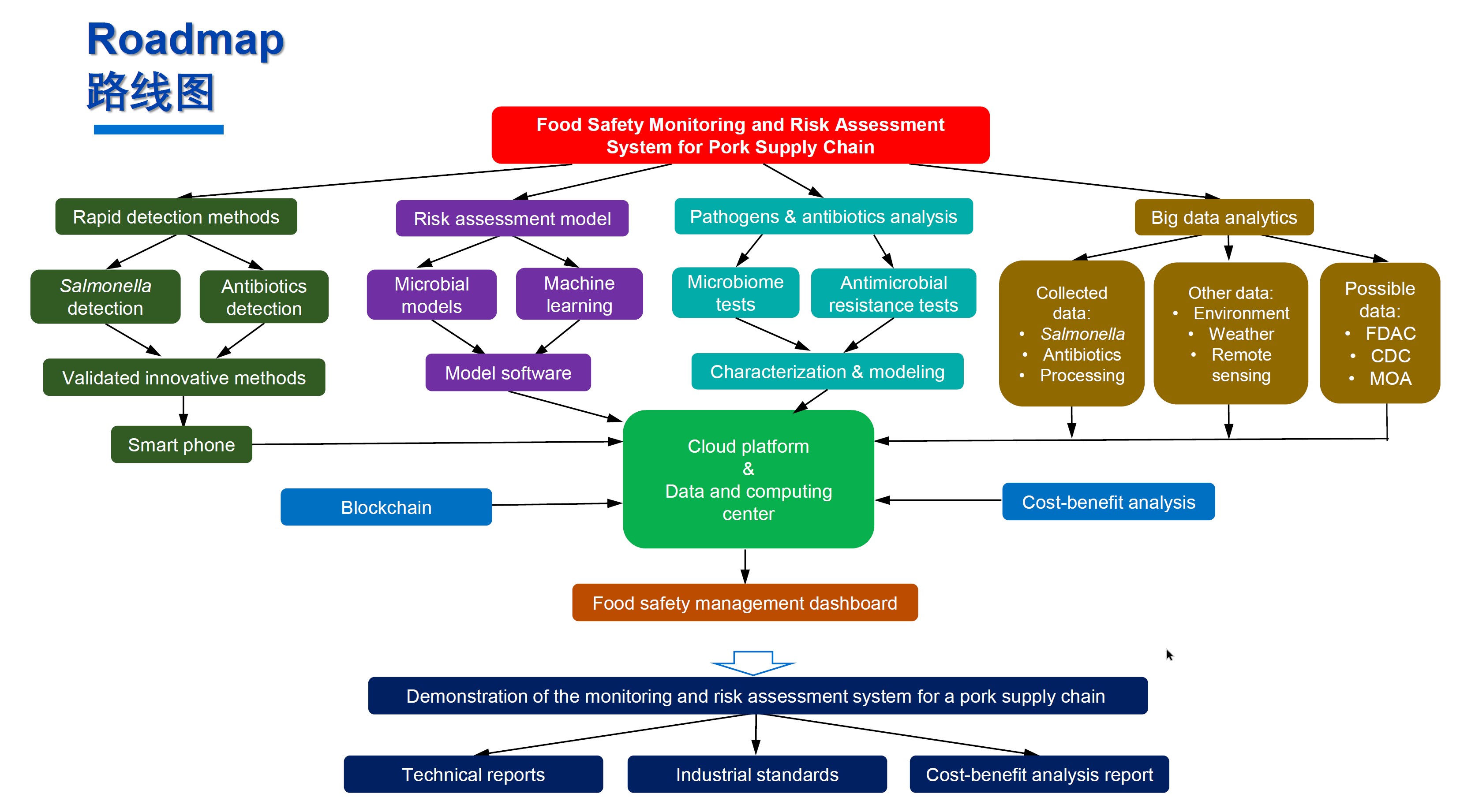As the largest pork producing and consuming country in the world, China’s pork industry is experiencing an unprecedented transition from family and small farm-based production to highly intensive production system, and from horizonal to vertical integration. The complexity of pig diseases, use of antibiotics with AMR, and other contaminations in pork production and the supply chain has created significant challenges for ensuring pork safety on consumers’ tables. The current monitoring and control of foodborne pathogens as well as antibiotics in the whole pork supply chain are insufficient due to the existing problems of incomplete epidemiological data, unclear control points, delayed detection, limited understanding of AMR, and too many uncertain factors.
Therefore, foodborne pathogens and antibiotics with AMR in pork products need to be rapidly identified, detected, and traced back to the origin, and at the same time collected data should be transparent so that related risk can be assessed for making effective control decisions and accurate predictions. Rapid detection and risk assessment have been investigated and applied to parts of pork production systems, but these studies have many limitations. For example, detection tests were performed in analytical laboratories, not in the field; risk analysis models were developed without dynamic feedback and interfering bacteria in the network; pathogens and antibiotics have never been examined in the entire pork supply chain including both pre- and post-harvest sectors; and related data were not transparent.

This Walmart Foundation sponsored project will tackle the above-mentioned issues with a goal to improve the food safety of pork supply chain in China. The eight project goals as stated in the proposal are as follows:
- To collect and analyze the data on the contamination and intervention of E. coli, Salmonella, S. suis, antibiotic residues, and antimicrobial resistance (AMR) from production, processing, transportation, and storage to market.
- To evaluate the strategies of reducing these pathogens and residues by improving farm biosecurity and disease eradication, and/or by using biological agents (e.g. probiotics, vaccine, and phage) and novel abiotic intervention techniques (e.g. UV and photocatalysis).
- To determine the pathobiome of the pork supply chain using microbiome and big data analysis.
- To develop and evaluate rapid in-field pathogen and residue detection methods.
- To develop quantitative and dynamic risk assessment models to predict the potential risk of these pathogens and residues.
- To develop and demonstrate the integrated food safety monitoring and risk analysis system for the whole supply chain.
- The cost-benefit analysis and recommendation for industry standard.
- Education and outreach
